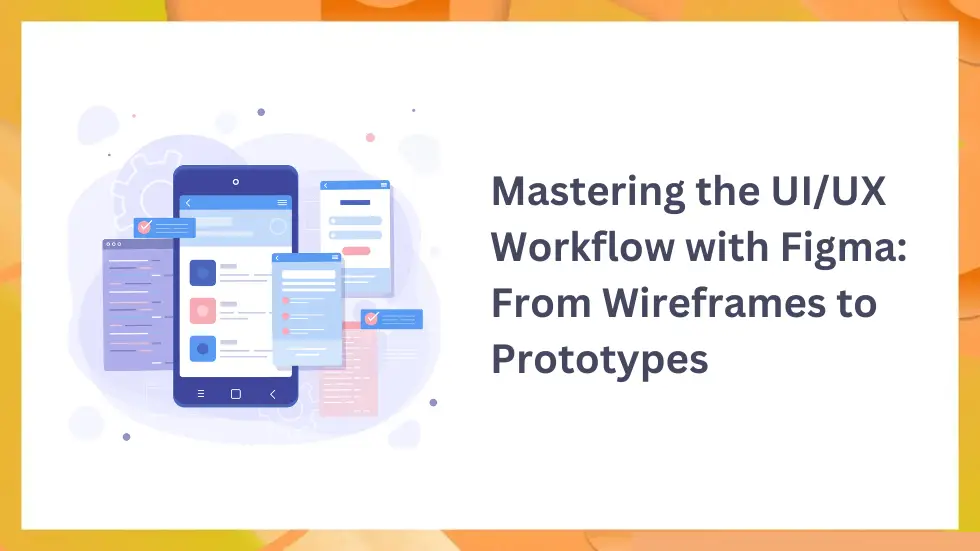In the high-speed world of digital product development, particularly in industries like travel, UI/UX workflow efficiency is no longer a luxury—it’s a necessity.
Enterprise teams, startups, and seed-funded companies must ship user-friendly, consistent, and interactive experiences quickly to stay ahead.
That’s where a streamlined UI/UX workflow with Figma makes a real difference.
More than just a design tool, Figma has evolved into a collaborative ecosystem for designers, product managers, and developers to work in sync—from early wireframes to polished prototypes and developer-ready handoffs.
This blog explores how you can optimize your entire product design cycle using Figma, with a travel app example that reflects real-world complexity and scalability.
✈️ Real-World Use Case: Designing a Travel App with Figma
Let’s imagine your product team is building a mobile app called GlobeHop with key features like:
- Flight search
- Hotel booking
- Trip itinerary builder
- Real-time travel alerts
These features require a fast and collaborative UI/UX design workflow, where multiple teams can build and test features without breaking design consistency or losing momentum.
🧱 Step 1: Start with Wireframes – Fast, Clear, Collaborative
The foundation of any effective UI/UX workflow begins with wireframing. In Figma, this stage is seamless and efficient due to:
- Drag-and-drop components
- Auto Layout for responsive designs
- Plugins like Wireframe.cc, Wire Box, and Autoflow
- Real-time editing and team feedback
✅ Example: Quickly wireframe the “Search Flights” screen using reusable elements and share it instantly with your team—no exporting or back-and-forth emails.
💡 Pro Tip: Use FigJam (Figma’s whiteboarding tool) to map user journeys collaboratively before moving into layout mode.
🎨 Step 2: High-Fidelity UI – Build with a Scalable Design System
Once wireframes are finalized, shift to high-fidelity UI creation using Figma’s design system capabilities:
- Define and apply Styles for consistent fonts, colors, and spacing
- Reuse Components like buttons, search bars, or input fields
- Create Variants for different states like hover, active, or disabled
- Sync with development using Figma Tokens
✅ Example: A “Book Now” button looks, behaves, and scales consistently across the app—from hotel checkout to flight confirmation—thanks to shared components.
🧪 Step 3: Build Interactive Prototypes – Test User Flows Early
Prototyping in Figma allows your team to test product flows without writing a single line of code. Use Figma to:
- Simulate navigation and transitions
- Connect screens and user interactions
- Add micro-animations or modal behaviors
- Share live prototypes with testers and stakeholders
✅ Example: Build the full booking flow from selecting a flight to completing payment—directly in Figma—and gather feedback before development begins.
🔄 Integration Tip: Connect with tools like Maze or Useberry for user testing and behavioral analysis, without leaving Figma.
🤝 Step 4: Design-to-Development Handoff – Accurate and Fast
A critical piece of the UI/UX workflow with Figma is the seamless handoff to developers.
Figma simplifies this process with:
- Dev Mode for a developer-friendly view with CSS snippets
- Click-to-inspect dimensions, spacing, and styles
- Multi-format asset downloads
- Real-time commenting and version control
✅ Example: Developers can directly access the specs for the “Trip Summary” screen, ensuring pixel-accurate implementation without Slack threads or spec documents.
🔧 Advanced Tip: Integrate Figma with Storybook, Zeplin, or your design system repo to ensure alignment across design and code.
⚙️ Must-Have Plugins to Enhance Your Figma Workflow
| Plugin Name | Function |
| Content Reel | Add realistic content and images |
| Contrast | Test accessibility in real time |
| Figmotion | Animate elements within Figma |
| Figma Tokens | Manage and sync design tokens to code |
| Autoflow | Map user flows visually |
These tools supercharge your UI/UX design workflow and improve overall speed, accessibility, and collaboration.
📈 Why This Workflow Matters in Scalable Products
For apps like GlobeHop, users navigate through complex flows—from trip planning to checkout—within minutes. In such cases, any inconsistency or broken interaction hurts trust and usability.
A UI/UX workflow with Figma delivers:
- Faster product iterations
- Design consistency across screens and platforms
- Collaborative workflows across global teams
- Fewer errors in development
- Higher stakeholder alignment and faster approvals
✅ Case Study: Skyscanner built its entire design system on Figma, enabling distributed teams to launch features faster and with fewer design bugs—reducing engineering overhead and design debt.
✨ Final Thoughts: Build Smarter, Not Just Faster
Modern product teams can’t afford to treat design and development as silos. A streamlined UI/UX workflow with Figma ensures everyone—from design to code—is working from the same source of truth.
So the next time you’re launching a new feature or reimagining a product experience, ask yourself:
Are we designing screens, or building smart workflows?
Because with Figma, you’re not just designing—you’re building better product experiences.
Additional Resources:
